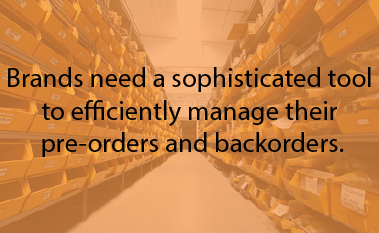Finding Inventory Equilibrium with Pre-orders and Back Orders

Running an omnichannel retail brand requires careful balancing pre-orders, backorders and in-stock items. Any minor disequilibrium in your inventory levels leads to missed sales opportunities, an unwieldy amount of overstock or both.
Either way, it's going to cut into profit margins.
Omnichannel retailers need to implement a strategy that allows them to adequately deal with pre-orders for "hot items" and building hype, while also not opening the company to an influx of overstock that weighs down inventory and ties up precious working capital.
The Cost of Dead Inventory
If a manager gets a tip about a supposedly popular offering for next season, there's going to be a push to stock that product and ensure there's sufficient quantity for demand.
However, sometimes it's difficult to predict what will be a hot item. Guess wrong and you're left with warehouse full of the product with few options to sell it. Business of Fashion noted that estimates put the cost of dead inventory in the U.S. at approximately $50 billion of year.
Or, on the opposite end of the spectrum, a retailer may end up with a popular product that sells out of in less than a week with no way of stocking more. If the company wasn't expecting this, they wouldn't be able to capitalize on selling this product. That's a classic example of pre-ordering and backordering mistakes.
While it's important for retailers to have sufficient items in stock - especially those hot items that are all the rage - it's crucial they have just the right amount available. Too much, and you're stuck with unsellable goods. Too little, and potential customers will seek out a new merchant.
To ensure a certain level of flexibility, retailers often have to slightly overbuy, but it doesn't mean they have to saddle themselves with excess inventory.
Deck Commerce Helps Retailers With Inventory Management Strategy
While it might be easy to blame this problem on finicky shoppers and other external factors like supply chain vendors, the simple fact is that retailers need to first focus on how much they themselves are purchasing and not how little consumers are buying (which is a separate consideration).

Retailers can successfully find that equilibrium by using Deck Commerce, an order management system that can integrate with a supply management platform on the backend (i.e., ERP), and can have insight into what product inventory is scheduled to show up in the distribution center or is already in the process of being created in a backorder scenario.
This helps businesses gauge the amount of demand they might expect by having pre-sales or pre-orders. This also means retailers won't lose orders they otherwise would by being able to supply a backorder scenario where customers will wait a few extra weeks.
Click here to learn how Deck Commerce can help omnichannel retailers find an inventory equilibrium with preorders and backorders.
